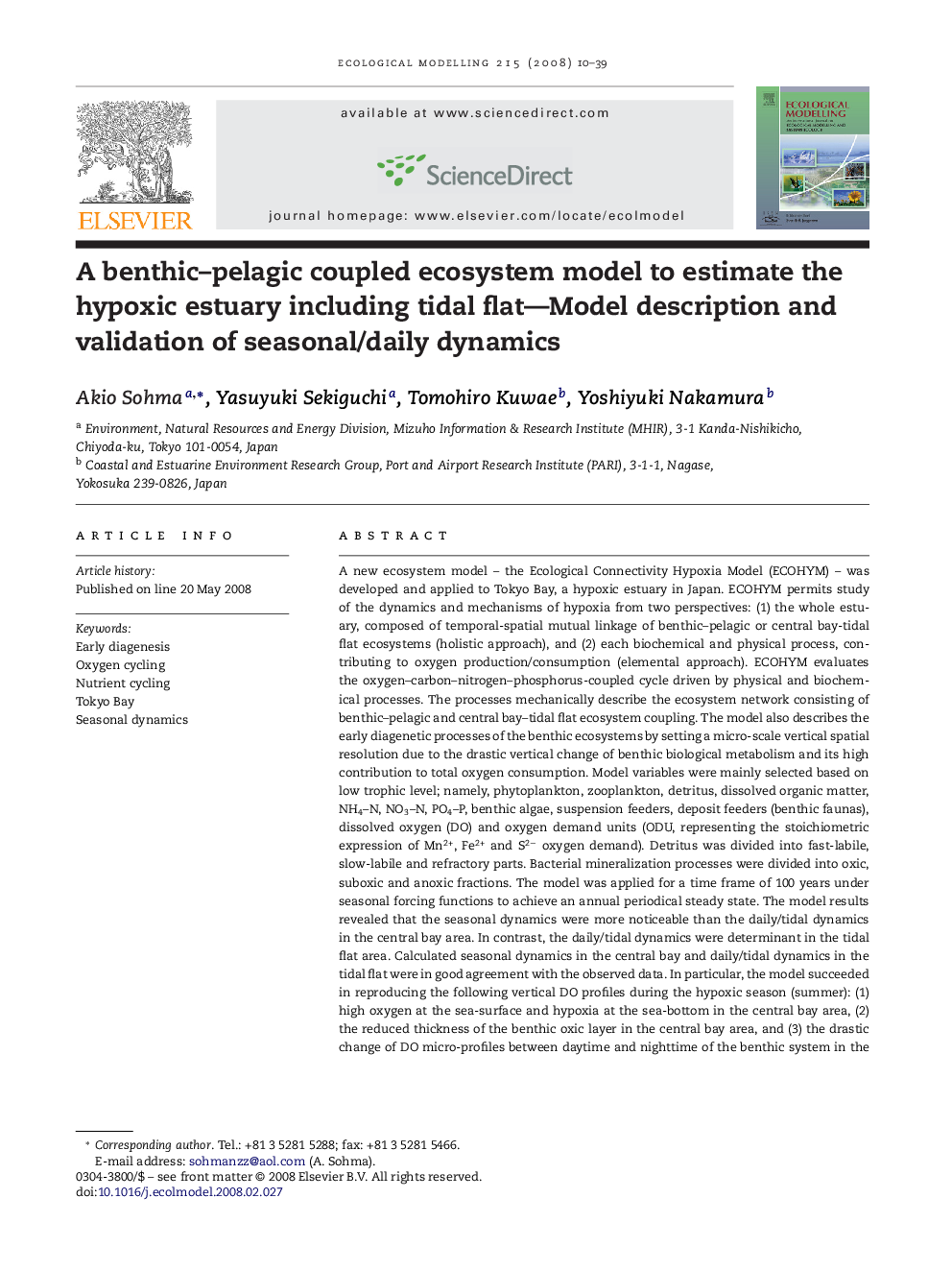| کد مقاله | کد نشریه | سال انتشار | مقاله انگلیسی | نسخه تمام متن |
|---|---|---|---|---|
| 4378024 | 1617532 | 2008 | 30 صفحه PDF | دانلود رایگان |
عنوان انگلیسی مقاله ISI
A benthic-pelagic coupled ecosystem model to estimate the hypoxic estuary including tidal flat-Model description and validation of seasonal/daily dynamics
دانلود مقاله + سفارش ترجمه
دانلود مقاله ISI انگلیسی
رایگان برای ایرانیان
کلمات کلیدی
موضوعات مرتبط
علوم زیستی و بیوفناوری
علوم کشاورزی و بیولوژیک
بوم شناسی، تکامل، رفتار و سامانه شناسی
پیش نمایش صفحه اول مقاله

چکیده انگلیسی
A new ecosystem model - the Ecological Connectivity Hypoxia Model (ECOHYM) - was developed and applied to Tokyo Bay, a hypoxic estuary in Japan. ECOHYM permits study of the dynamics and mechanisms of hypoxia from two perspectives: (1) the whole estuary, composed of temporal-spatial mutual linkage of benthic-pelagic or central bay-tidal flat ecosystems (holistic approach), and (2) each biochemical and physical process, contributing to oxygen production/consumption (elemental approach). ECOHYM evaluates the oxygen-carbon-nitrogen-phosphorus-coupled cycle driven by physical and biochemical processes. The processes mechanically describe the ecosystem network consisting of benthic-pelagic and central bay-tidal flat ecosystem coupling. The model also describes the early diagenetic processes of the benthic ecosystems by setting a micro-scale vertical spatial resolution due to the drastic vertical change of benthic biological metabolism and its high contribution to total oxygen consumption. Model variables were mainly selected based on low trophic level; namely, phytoplankton, zooplankton, detritus, dissolved organic matter, NH4-N, NO3-N, PO4-P, benthic algae, suspension feeders, deposit feeders (benthic faunas), dissolved oxygen (DO) and oxygen demand units (ODU, representing the stoichiometric expression of Mn2+, Fe2+ and S2â oxygen demand). Detritus was divided into fast-labile, slow-labile and refractory parts. Bacterial mineralization processes were divided into oxic, suboxic and anoxic fractions. The model was applied for a time frame of 100 years under seasonal forcing functions to achieve an annual periodical steady state. The model results revealed that the seasonal dynamics were more noticeable than the daily/tidal dynamics in the central bay area. In contrast, the daily/tidal dynamics were determinant in the tidal flat area. Calculated seasonal dynamics in the central bay and daily/tidal dynamics in the tidal flat were in good agreement with the observed data. In particular, the model succeeded in reproducing the following vertical DO profiles during the hypoxic season (summer): (1) high oxygen at the sea-surface and hypoxia at the sea-bottom in the central bay area, (2) the reduced thickness of the benthic oxic layer in the central bay area, and (3) the drastic change of DO micro-profiles between daytime and nighttime of the benthic system in the tidal flat areas. Oxygen fluxes at the sediment-water interface in the model also reproduced the in situ observed values both in the central bay and tidal flat areas.
ناشر
Database: Elsevier - ScienceDirect (ساینس دایرکت)
Journal: Ecological Modelling - Volume 215, Issues 1â3, 10 July 2008, Pages 10-39
Journal: Ecological Modelling - Volume 215, Issues 1â3, 10 July 2008, Pages 10-39
نویسندگان
Akio Sohma, Yasuyuki Sekiguchi, Tomohiro Kuwae, Yoshiyuki Nakamura,